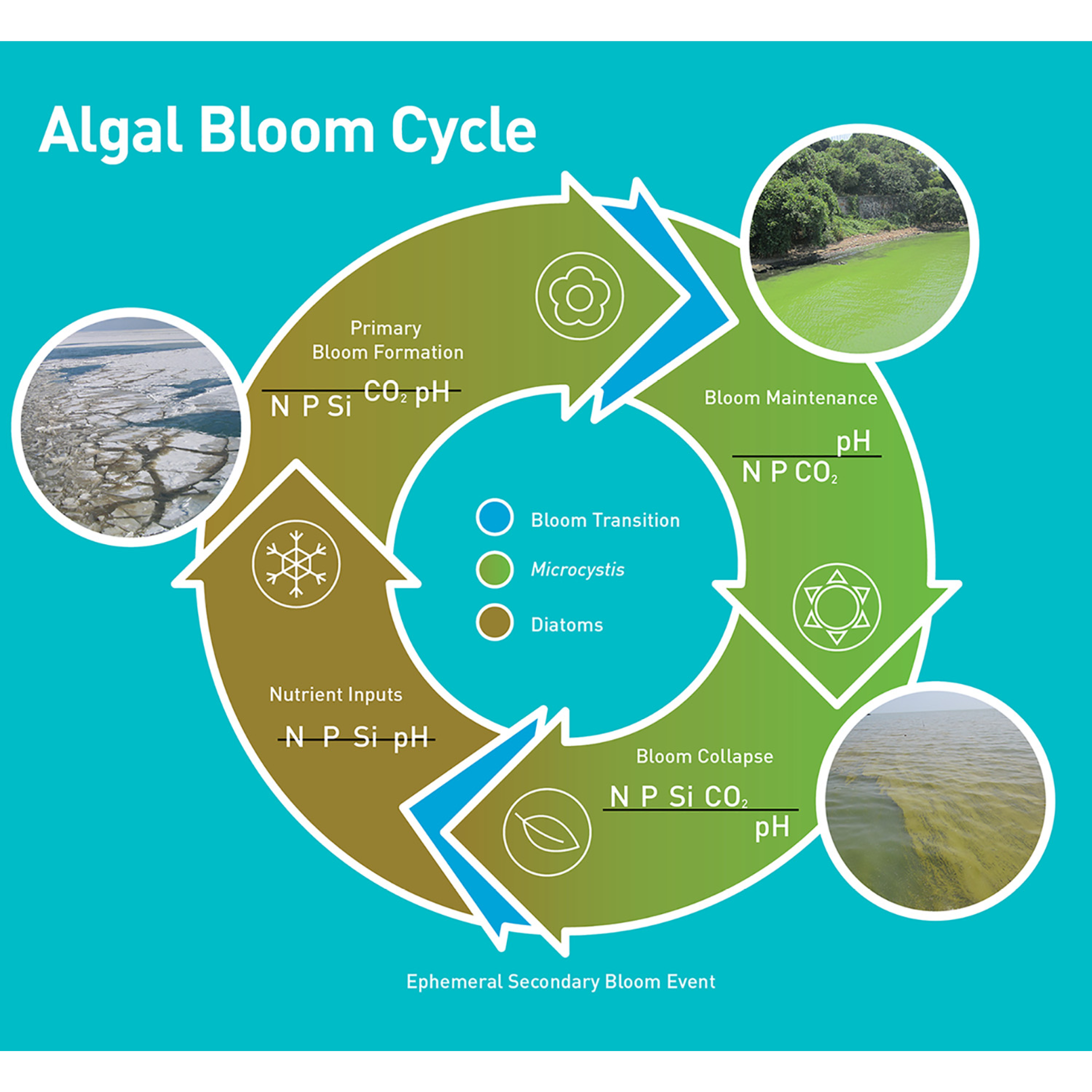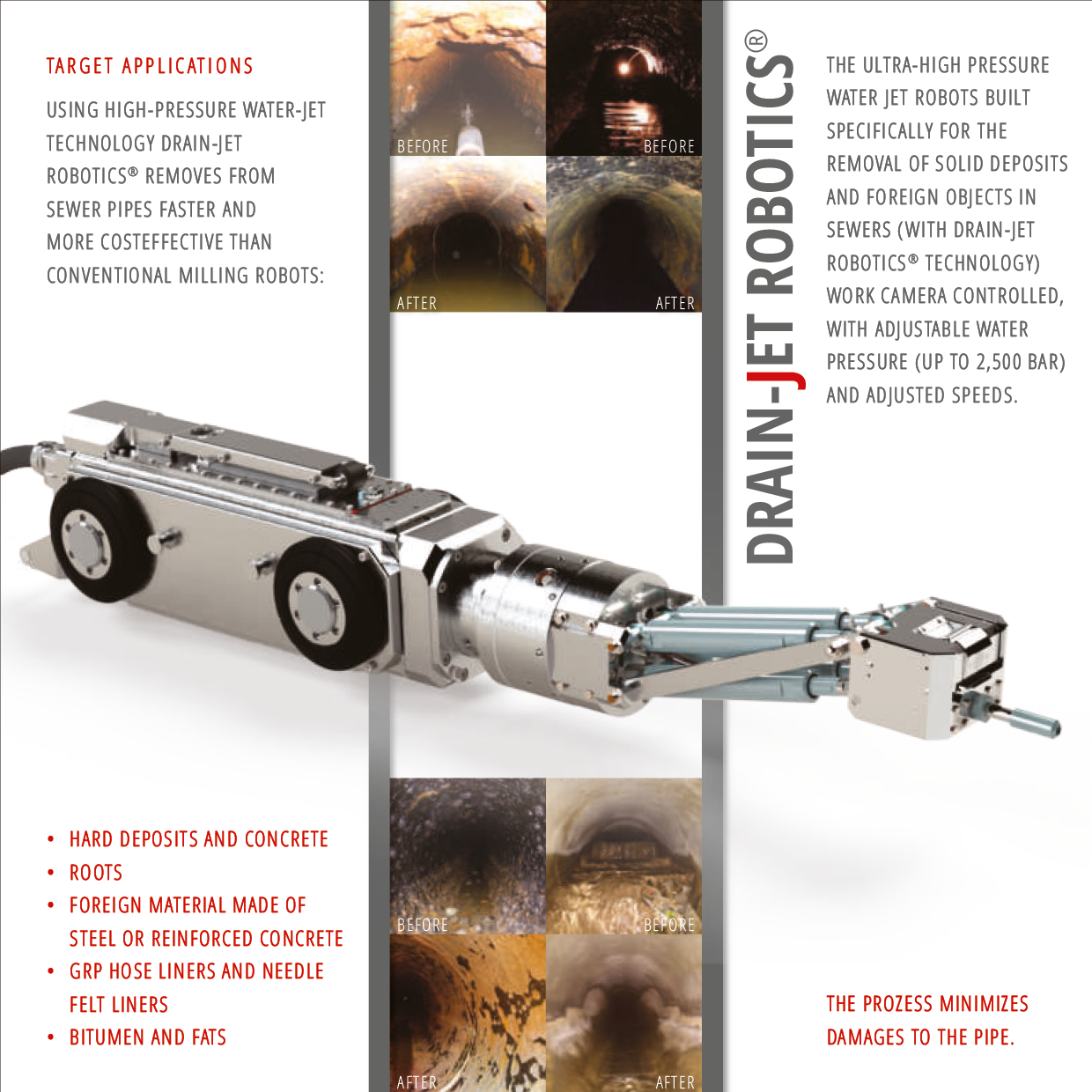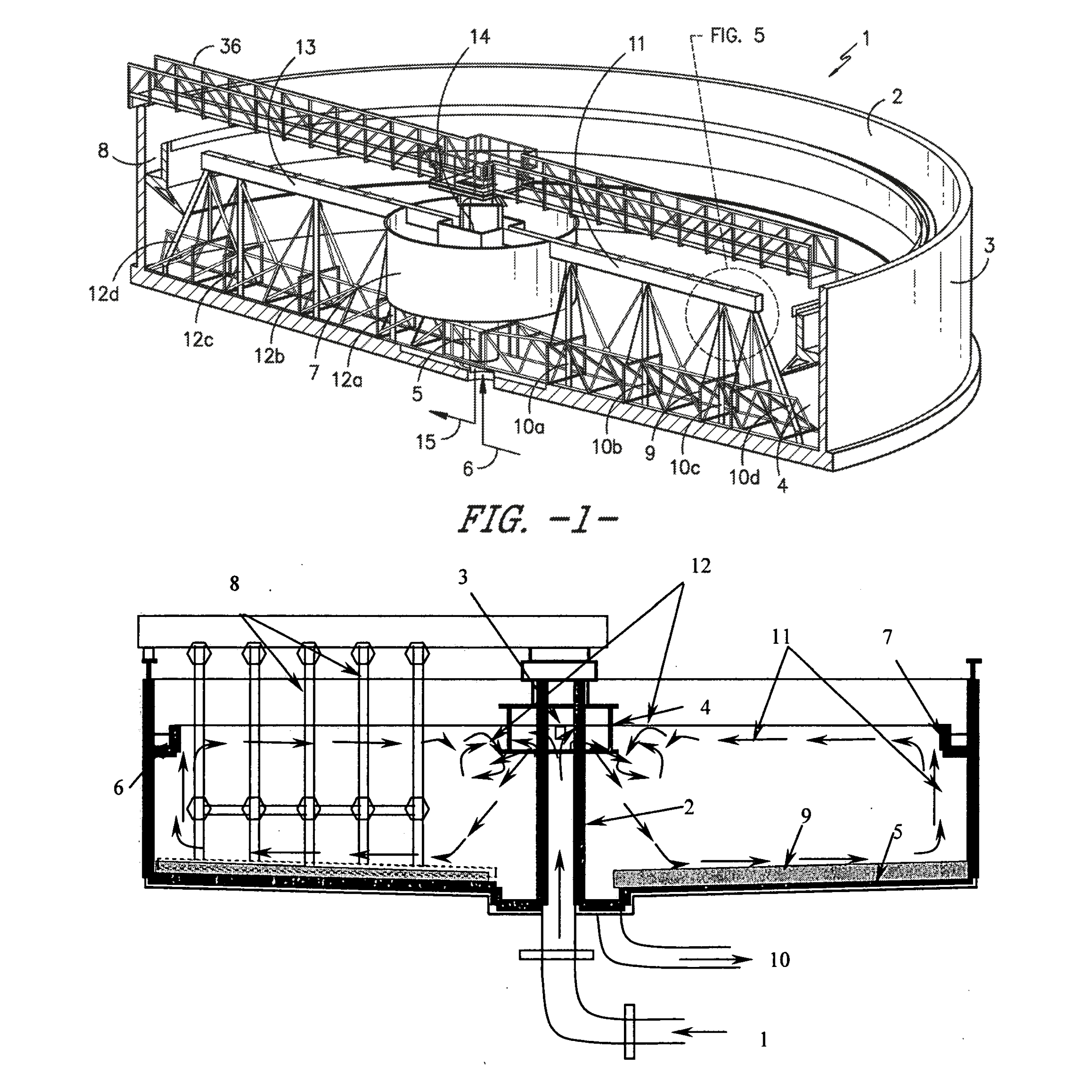
A phenomenon that occurs when due to human activities, a species has access to more nutrients than normal, causing a bloom in population. This leads to an imbalance in the ecosystem that is detrimental to other species.
The Algae Bloom, in particular, is one resulting from cultural eutrophication, where the two main contributors of minerals and nutrients into the water are raw sewage and agriculture. However, any usage including recreational use can contribute to this process and is one that has occurred historically. Eutrophication, most commonly the accumulation of phosphate and nitrate, occurs naturally and any human presence has meant the existence of cultural eutrophication. Say in the medieval era, the effects of this accumulation may have been no less than it is now, but a change did occur in that the effects are no longer localized and the Algae Blooms are being seen at a global scale. This is partially due to densification of population and industrial fertilizer use, however of note is the movement of nutrients in the form of food which also has a water amount attached in terms of production. Beyond the globalizing nature of agriculture, animal husbandry contributes to this process in the form of animal sewage along with any fertilizers used to produce any feed, most of which ends up in the water cycle.
As water tends to end up in the ocean, coastal and delta areas tend to be the most impacted by Algae Blooms, but areas with low water exchange like an Endorheic Basin are also particularly susceptible. Additionally, with the fracturing of the water cycle through dams, sewers, and globalized sources of phosphorus like the Kola Peninsula, the effects and contributions to Algae Blooms can reach far inland. However, cultural eutrophication in itself is a natural part of human existence and phenomenon such as the “Red Tide” are from extreme cases resulting from an incomplete biogeochemical water cycle.
← Back to Lexicon
Seasonal bloom cycle of a cyanobacteria, Microcystis, that is prevalent in freshwater
Sources: Wilhelm, Steven W., George S. Bullerjahn, and R. Michael L. McKay. "The Complicated and Confusing Ecology of Microcystis Blooms." mBio 11.3 (2020): e00529-20. Web. 03 May. 2021.
Sources: Wilhelm, Steven W., George S. Bullerjahn, and R. Michael L. McKay. "The Complicated and Confusing Ecology of Microcystis Blooms." mBio 11.3 (2020): e00529-20. Web. 03 May. 2021.
- Wassmann, Paul. (2005). Cultural eutrophication: perspectives and prospects. Drainage Basin Inputs and Eutrophication: An Integrated Approach.

Vienna was subjected to a growing population by the mid-19th century and required better hygiene and public conveniences with the improved knowledge of diseases. The Vienna City Council founded the Urinal Commission in 1863 to install public toilet facilities throughout the city. Johann Gottlieb Wilhelm Beetz, a German-Austrian building contractor, offered a 25-year contract to the City of Vienna in 1880 to build public toilets modelled on the lavatories of Berlin. There were several protests by the population against building public toilets in the Ringstrasse, resistance by the Schottenstift- a Benedictine monastery, objections from the church authorities which limited the construction in several proposed locations. After several heated discussions and compromises, the proposal got accepted, and the Beetz company built seventy-three facilities in Vienna by 1910, and operated around 200 toilets and urinals till the 1930s.
The first model of toilets, also called Closet-Hauschen, were small wooden houses with cabins for men and women that soon turned out to be lucrative and were described as "practical, quite comfortable and luxuriously furnished". The municipality wanted public toilets to be camouflaged as street furniture, as a result of which, Beetz replaced wood with iron and glass in his design of the public lavatory on the Parkring; fashioning it in a Secessionist style and implementing the form of the waiting halls of the Viennese horse tramway. In 1904, Beetz built the first underground public toilet in Graben based on the architect Franz Krasny's plans in an attempt to make these toilets even more discreet. The underground structure of 14.5 × 7.7 meters with a height of 3 meters is the last existing public Art-Nouveau toilet in Vienna which can be accessed via two staircases with corresponding labels to separate the genders and adorned with two gas lanterns which doubled as ventilation chimneys. Beetz invented the oil siphon in 1883 where the metal urinal in toilets is coated in a special oil containing disinfectant, the 'urinol'. The use of urinol saved water flushing and kept the odours out, creating an early form of the dry urinal for which he received numerous well-deserved honours. In 1903, the City of Vienna decided to switch to these dry urinals to prevent damage in the water flushing systems during winters.
Vienna has always been immersed in art and culture, even in its most banal structures of public toilets built by Wilhelm Beetz listed as monuments, some of which are open for public use even today.
← Back to Lexicon
The first model of toilets, also called Closet-Hauschen, were small wooden houses with cabins for men and women that soon turned out to be lucrative and were described as "practical, quite comfortable and luxuriously furnished". The municipality wanted public toilets to be camouflaged as street furniture, as a result of which, Beetz replaced wood with iron and glass in his design of the public lavatory on the Parkring; fashioning it in a Secessionist style and implementing the form of the waiting halls of the Viennese horse tramway. In 1904, Beetz built the first underground public toilet in Graben based on the architect Franz Krasny's plans in an attempt to make these toilets even more discreet. The underground structure of 14.5 × 7.7 meters with a height of 3 meters is the last existing public Art-Nouveau toilet in Vienna which can be accessed via two staircases with corresponding labels to separate the genders and adorned with two gas lanterns which doubled as ventilation chimneys. Beetz invented the oil siphon in 1883 where the metal urinal in toilets is coated in a special oil containing disinfectant, the 'urinol'. The use of urinol saved water flushing and kept the odours out, creating an early form of the dry urinal for which he received numerous well-deserved honours. In 1903, the City of Vienna decided to switch to these dry urinals to prevent damage in the water flushing systems during winters.
Vienna has always been immersed in art and culture, even in its most banal structures of public toilets built by Wilhelm Beetz listed as monuments, some of which are open for public use even today.
← Back to Lexicon
Drawings of the first underground public toilet in Graben next to the Josefsbrunnen.
Sources: “Öffentliche Bedürfnisanstalt am Graben”, Wikipedia, May 25, 2019, https://de.wikipedia.org/wiki/%C3%96ffentliche_Bed%C3%BCrfnisanstalt_am_Graben
- “Wilhelm Beetz (Bauunternehmer)”, Wikipedia, May 23, 2019, https://de.wikipedia.org/wiki/Wilhelm_Beetz_(Bauunternehmer)
- “Vienna at Your Convenience: A History of Public Toilets: Archives: The Vienna Review”, Archives | The Vienna Review, accessed May 03, 2021, https://www.theviennareview.at/archives/2012/vienna-at-your-convenience-a-history-of-public-toilets-2
-
“Toilets of Vienna: A Flush of Relief”, Metropole, November 20, 2019, https://metropole.at/toilets-of-vienna-a-flush-of-relief/
Drain-Jet Robotics
![]()

Urban services are unnoticeable elements of the city unlike new buildings and suburbs development. The sewer municipal system requires constant maintenance to avoid errors and breakages. Being underground it was always a technical question how to clean and repair sewer canals and pipes.
The very first inventions were applied to the Paris sewer system. The Flushing boat was used to move through sewers for manually control and cleaning. The Pills Balls, that were supposed to push and velocity sewer flows, were produced in different sizes as a technical answer for the unreached places of uniform tunnels.The next step in advancing maintenance was self-powered (by engine) equipment that allowed workers to operate overground.1 The further technical improvement, aimed to take workers from manual cleaning and repairing to remote controlling of equipment, came to robotization tools in the end through the automatization and computerization.
Drain-Jet Robotics has high-pressure water serves for cleaning and preparing tunnels and sewer pipelines for their repairs. The video camera allows you to monitor a sewer surface and control a robot in real time, while the data and track recording helps to monitor the sewer tunnels and work operatively and locally. The spot approach of control helps to avoid massive earthworks and optimizes time and resources on fixing breakages and deterioration. Thus Drain-Jet Robotics became a constructor with all additional parts and equipment and a car control room turned into a computer program with navigating robots in a sewer labirint, that is how the real work process of maintaining has turned from tough cleaning to an exciting game.
For proper maintenance sewer lines should be cleaned at least once a year. One Robot with two workers can clean up to 16 Tons KG , from 45 to 100 meters of tunnel in one cleaning session.2 Thus, to clean the municipal sewer system like in Vienna (2400 km), it required 68 robots and 136 workers with everyday cleaning.
← Back to Lexicon
Drain-Jet Robotics advertisement brochure shows one of the latest version of technical cleaning equipment
Sources: https://www.mauerspecht.de/drain-jet-robotics-en.html
Sources: https://www.mauerspecht.de/drain-jet-robotics-en.html
- http://www.sewerhistory.org/photosgraphics/maintenance-sewer-cleaning-equipment/
- https://www.sewerrobotics.com/en/sewer-pipeline-cleaning-and-obstruction-removal/global-pipe-cleaning-and-obstructions-removal-case-studies

In the 19 century most city metropolitans were under social changes that led to significant spatial transformation and modernization involving new technical solutions. Sewer system was a main part of development in city sanitation, that was an urgent issue to be solved to overcome cholera. In Vienna under the pressure of the Revolution of 1848 and economic growth 1850 it was decided to free areas of the military fortification for public use. The project of Ringstrasse consisted of streets, boulevards, new public buildings and institutions. While the famous and outstanding projects of Sitte and Wagner, there was another side of city development that are underground systems, invisible part of the same ambition. The sewer network already existed by this time in the old center but it became a coordinated and organized system only in 1850. During Ringstrasse building there was a sewer construction boom in 1861. New improvement works were implemented that was sewer collectors building in the suburbs in 1861 and covering the River Wien in Wien Canal in 1898.
The Third Man movie shows this invisible underground layer of Vienna. The criminal, Lime, uses the underground sewage system to move between sectors unwitnessed during the occupation of Vienna. He also tries to escape from police by going down in the labyrinth of sewer tunnels. The police work both searching inside the underground system and guarding outside at sewage hatches that exposed connections of the underground system with the real city and alternative links between city sites.1
Through 19 century modernisation, afterwar repairment and last digital improvements Vienna’s sewer system represents a 2,400 km wide net of canals and pipes, dropping and removing about 15 tonnes of deposits per day.2
← Back to Lexicon
Scenes of “The Third Man”
Sources: “The Third Man”movie, Carol Reed, 1949.
Sources: “The Third Man”movie, Carol Reed, 1949.
- “The Third Man”movie, Carol Reed, 1949.
- https://www.wien.gv.at/english/environment/sewer-system/

Water can also be understood as waste. In order for dirty water to be incorporated to the water cycle, it must undergo sewage treatment: the process of removing contaminants from municipal wastewater. Physical, chemical, and biological processes are used to remove contaminants and produce treated wastewater (or treated effluent) that is safe enough to release water into the environment. The construction of centralized sewage treatment plants began in the late 19th and early 20th centuries, principally in the United Kingdom and the United States.1 Since then, the standardized and globalized system has consisted in the concatenation of deposits with different functions. The water flow involves three stages, called primary, secondary and tertiary treatment.
Primary treatment consists of temporarily holding the sewage where heavy solids can settle to the bottom while oil, grease and lighter solids float to the surface. The settled and floating materials are removed and the remaining liquid may be discharged or subjected to secondary treatment.
Secondary treatment removes dissolved and suspended biological matter. It is typically performed by water-borne microorganisms in a managed habitat. In addition, it may require a separation process to remove the micro-organisms from the treated water prior to discharge or tertiary treatment.
Tertiary treatment. Treated water is sometimes disinfected chemically or physically (for example, by lagoons and microfiltration) prior to discharge into a stream, river, bay, lagoon or wetland, or it can be used for the irrigation of a golf course, greenway or park. If it is sufficiently clean, it can also be used for groundwater recharge or agricultural purposes.
Secondary Clarifier Deposit
Sources: https://patents.google.com/patent/US7637379B2/de
https://uspto.report/patent/grant/10,751,647
Sources: https://patents.google.com/patent/US7637379B2/de
https://uspto.report/patent/grant/10,751,647
- Wastewater Treatment Process, https://www.britannica.com/technology/wastewater-treatment